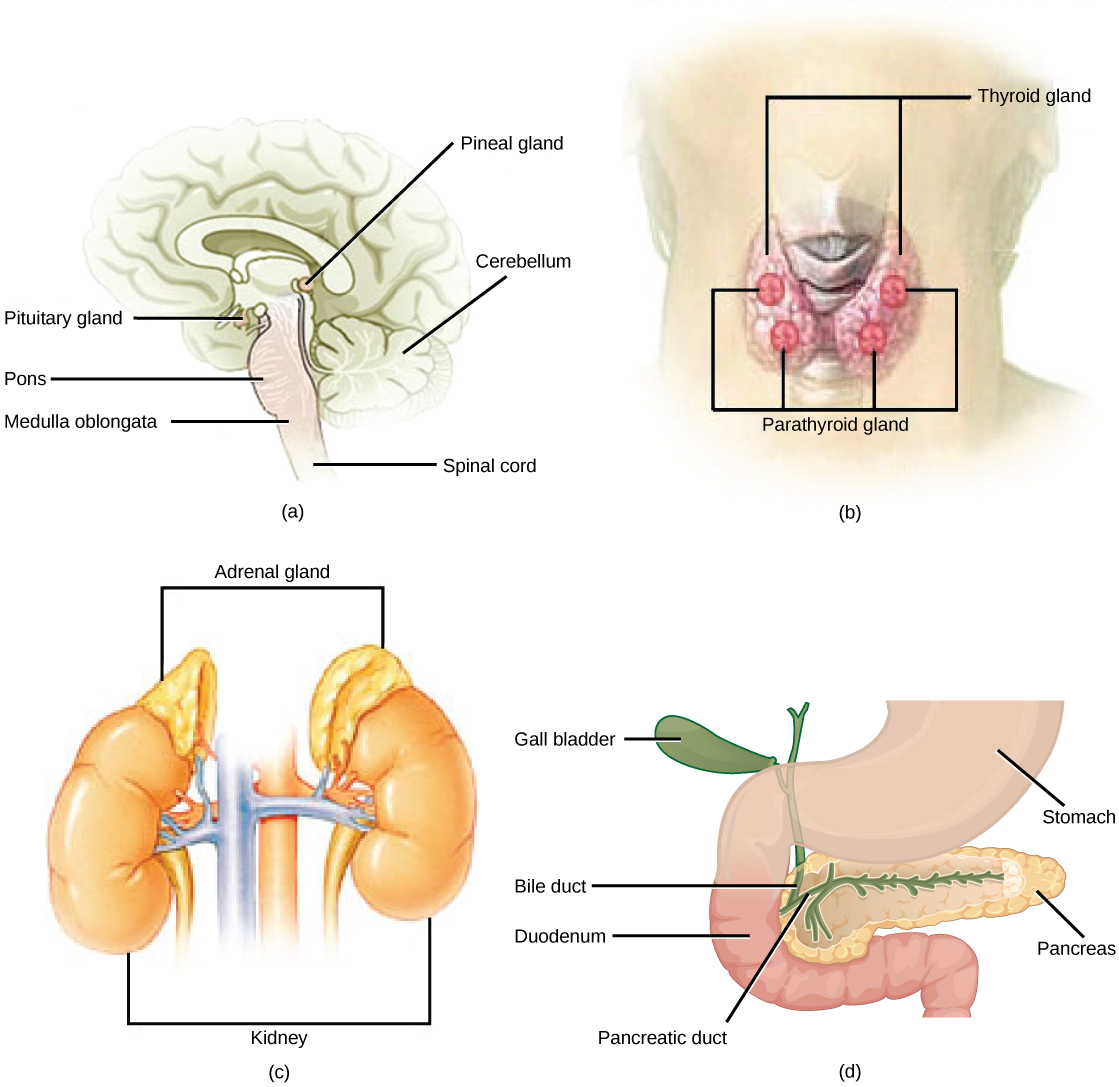| << Chapter < Page | Chapter >> Page > |
Hormones cause changes in target cells by binding to specific cell-surface or intracellular hormone receptors , molecules embedded in the cell membrane or floating in the cytoplasm with a binding site that matches a binding site on the hormone molecule. In this way, even though hormones circulate throughout the body and come into contact with many different cell types, they only affect cells that possess the necessary receptors. Receptors for a specific hormone may be found on or in many different cells or may be limited to a small number of specialized cells. For example, thyroid hormones act on many different tissue types, stimulating metabolic activity throughout the body. Cells can have many receptors for the same hormone but often also possess receptors for different types of hormones. The number of receptors that respond to a hormone determines the cell’s sensitivity to that hormone, and the resulting cellular response. Additionally, the number of receptors available to respond to a hormone can change over time, resulting in increased or decreased cell sensitivity.
The endocrine glands secrete hormones into the surrounding interstitial fluid; those hormones then diffuse into blood and are carried to various organs and tissues within the body. The endocrine glands include the pituitary, thyroid, parathyroid, adrenal glands, gonads, pineal, and pancreas.
The pituitary gland is located at the base of the brain ( [link] a ). It is attached to the hypothalamus. The posterior lobe stores and releases oxytocin and antidiuretic hormone (ADH) produced by the hypothalamus. The anterior lobe responds to hormones produced by the hypothalamus by producing its own hormones, most of which regulate other hormone-producing glands.

The anterior pituitary produces six hormones: growth hormone, prolactin, thyroid-stimulating hormone, adrenocorticotropic hormone, follicle-stimulating hormone (FSH), and luteinizing hormone (LH). Growth hormone stimulates cellular activities like protein synthesis that promote growth. Prolactin stimulates the production of milk by the mammary glands. The other hormones produced by the anterior pituitary regulate the production of hormones by other endocrine tissues ( [link] ). The posterior pituitary is significantly different in structure from the anterior pituitary. It is a part of the brain, extending down from the hypothalamus, and contains mostly nerve fibers that extend from the hypothalamus to the posterior pituitary.
The thyroid gland is located in the neck, just below the larynx and in front of the trachea ( [link] b ). It is a butterfly-shaped gland with two lobes that are connected. The thyroid follicle cells synthesize the hormone thyroxine, which is also known as T 4 because it contains four atoms of iodine, and triiodothyronine, also known as T 3 because it contains three atoms of iodine. T 3 and T 4 are released by the thyroid in response to thyroid-stimulating hormone produced by the anterior pituitary, and both T 3 and T 4 have the effect of stimulating metabolic activity in the body and increasing energy use. A third hormone, calcitonin, is also produced by the thyroid. Calcitonin is released in response to rising calcium ion concentrations in the blood and has the effect of reducing those levels.

Notification Switch
Would you like to follow the 'Human biology' conversation and receive update notifications?